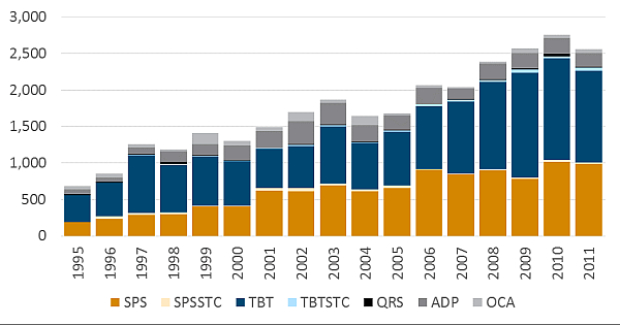Trade: A Matter of Standards
18 October 2016
Non-tariff measures are the hot topics in trade negotiations such as CETA and TTIP. The FIW Workshop on Friday, 21 October sheds light on why they matter so much today.
By Julia Grübler
Photo: Container, kmichiels, CC-BY-NC-ND 2.0
On 7 October 2016 during the press conference on negotiations of the Transatlantic Trade and Investment Partnership (TTIP) between the EU and the US, the EU’s Chief TTIP negotiator stated that one core rationale for negotiating non-tariff measures (NTMs) between the EU and the US is that it ‘will help [...] to shape global regulations to the benefits of consumers. Where TTIP would lead to shared approaches, those are more likely to be followed around the world, meaning a regulatory race to the top rather than a race to the bottom, as both the EU and the US are probably the most sophisticated regulatory regimes on the planet.’ (See EC).
But it is exactly this what many sceptics in Europe and similarly in the US are fearing: a degradation of existing standards. It is mainly the fear of a conclusion of TTIP that raises antagonism against the Comprehensive Economic and Trade Agreement (CETA) between the EU and Canada, as it is by many seen as a blueprint for TTIP. Negotiations on CETA lasted from 2009 to summer 2014. Today, two years after the negotiations were concluded, and less than two weeks before the planned date for signing the CETA treaty at the EU-Canada summit, the fate of the most ambitious trade deal of the EU remains uncertain.
New generation trade agreements and non-tariff measures
Both TTIP and CETA belong to a new generation of trade agreements, which do not only focus on trade in goods and cutting tariffs, but which in addition cover areas such as technical barriers to trade (TBT), sanitary and phytosanitary measures (SPS), rules of origin, investment and trade in services.
The increasing role of different types of non-tariff measures complementing and partly substituting traditional trade policy tools is not only evident from their prominence in recent trade negotiations but also from the dramatic increase in their use globally. There exist multiple types of non-tariff measures, which differ by their design, their purpose, and their effects.
FIW workshop: 21 October 2016
The FIW workshop ‘From Tariffs to Standards: Assessing the Role of Non-Tariff Measures’ taking place on 21 October 2016 from 08:30 AM to 01:30 PM at the wiiw [JG4] aims at discussing the importance of different types of non-tariff measures for which external experts on antidumping (Maurizio Zanardi, LUMS), technical barriers to trade (Lionel Fontagné, PSE) and standards (Olga Solleder, ITC) were invited. Participation at the workshop is free of charge, but a prior registration is necessary. (Programme | Registration)
Graph: Evolution of annual notified NTMs entering into force by NTM type
Source: Ghodsi, M., J. Grübler, R. Stehrer (2016), ‘Estimating Importer-Specific Ad Valorem Equivalents of Non-Tariff Measures', wiiw Working Paper, No. 129, Vienna, September.
Related Presentations
- Ghodsi: EU Trade Regulations on Hygienic Poultry Imports – A Quality Assessment
- Grübler: The Diversity of Non-Tariff Measures
- Zanardi: Preferential trade agreements and contingent protection
- Solleder: From Tariffs to Standards Assessing the role of Non-Tariff Measures
- Fontagne: Let's Try Next Door: Technical Barriers to Trade and Multi-Destination firms

